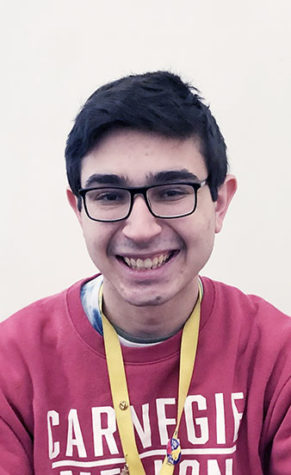As a race car driver, junior lives life in the fast lane
Houk puts his skills to use on the track
Junior Ayrton Houk feels the need, the need for speed.
As the sun rises over the Hill each morning, hurried students running late can often be seen zooming — no pun intended — up the drive to get to their classes, racing along the twisty turns of the incline before school begins.
However, one junior likes taking life even faster, up to 138 miles per hour to be exact. Junior Ayrton Houk is a competitive race car driver and lives for the thrill. One day he hopes to drive professionally.
Houk isn’t new to this sport. He and racing go way back.
His mother, Administrative Coordinator for Academic Affairs Mrs. Anna Lynn Houk, grew up a racing fan just like many people living in Indianapolis. However, his father was the one who got him and his family into the sport. “(My dad) raced go-karts and dirt bikes as he was growing up, and he got us into that stuff when I was young,” Ayrton said.
His family, including his sister, Diane Houk ‘20, actually raced off-road motorcycles together, but Ayrton wanted to take it a step further. “That evolved into go-karts around sixth grade. Then the go-karts got bigger and faster and we moved into cars last year,” he said.
Today, he races two very different types of vehicles competitively. The first is known as the midget car, a smaller and more responsive vehicle that’s made for round tracks. “The midget car is just an oval car. They’re set up to turn left,” the junior said. During the season, which began mid-March, Ayrton races these cars all over Central Indiana, including the Indianapolis Speedrome and even at the famed Indianapolis Motor Speedway.
Then, there’s the larger Formula 1600 car Ayrton races. “That’s an open wheel formula car. It gets much faster, it’s a lot heavier, and those are raced on road courses.” This is the one that hits the higher speeds and is typically raced on IndyCar courses all over the midwest, according to Ayrton.
Behind the adrenaline of a good race, there’s a lot of practice, hard work and raw determination.
“Not a ton of people know, but it’s a super physical sport,” Ayrton said. “There’s no power steering, there’s no brake booster, because all of those take away horsepower from the engine.” Mrs. Houk explained the heavy time commitment her son makes to become better at racing. “In the season, he’s on the track in one capacity or another at least two or three weekends a month. Thursday through Sunday he’s driving.”
Ayrton also explained the struggle in obtaining a place to practice. “It’s a little difficult because you can only do it when the weather’s nice and you always have to rent out the track, so it depends on money, how much you get from fundraising and sponsors. (But) before every race, there’s usually an open practice day the day before,” Ayrton said.
While on-location practice can be difficult to come by, when he can’t physically get on the track, Ayrton finds other ways to keep his skills sharp.
He works out three times a week at PitFit Training, which specializes in helping motorsports athletes build up muscle and improve endurance as well as their reaction time. He even has a racing simulator built at his house. “I’m on that a couple hours every day,” Ayrton said.
With the high speeds and high stakes associated with motorsports, Mrs. Houk says she is simultaneously excited and scared whenever Ayrton is racing. “I am a very competitive person, so when I watch him race I’m really competitive and excited for him to do well, but then at the same time when something happens that’s unexpected I get really scared and turn into mom mode instantly,” Mrs. Houk said. “But as soon as he’s OK I go back to being really competitive.”
It’s that same spirit and thrill of competition that’s driving Ayrton’s plans for the future, with goals to one day race the IndyCar circuit. “Right now I’m right on the base step of becoming professional,” Ayrton said. “One day my goal is to make this into my career. I want to get paid to race cars. So in the future, next year we’re going stick with this same car but after that take the next step up to (the) road to Indy and in about seven years I hope to turn this into a profession and get paid.”
Ayrton hopes to continue his journey of living life in the fast lane. While he does desire to one day make it a job, the reason he loves racing is for the sheer joy of the race itself, “just the speed and the adrenaline, the thrill of going fast,” Ayrton said.









